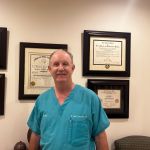Charlotte’s best rhinoplasty surgeon helps patients get comfortable with what to expect after surgery
Charlotte’s best rhinoplasty surgeon says that any surgery recovery is unique from patient to patient. Healing starts from day one once you are taken to the recovery room. Here, you will be awakened from anesthesia gently. You’ll be bandaged in a nasal splint and may have packing in your nose. Where packing isn’t necessary, you’ll have an attractive drip pad taped below your nostrils to catch a small amount of blood that may appear on the first night post rhinoplasty. Feeling pressure around your nose and sinus congestion as recovery begins is normal.
Once your surgical pain meds wear off, you may take pain medication later on at home. Decrease swelling and relieve pressure using a package of frozen peas. When the dripping stops, you’ll frequently start cleaning your small nasal incision using hydrogen peroxide. Applying an ointment will keep the crust from forming under the nostrils. You can eat anything you like or crave. A friend or family member should get you water and food as some grogginess from surgery can persist, making you fall or bang your nose.
Two to three days post-rhinoplasty
The first days after a rhinoplasty procedure are generally called the uncomfortable phase. During this period, you may not breathe through your nose and probably can’t smell anything. While it feels miserable, you shouldn’t feel any pain. Most patients rate pain from 3 to 4 on a pain scale of 10. Use your medication to relieve pain. You can also feel nauseous and find it hard to sleep due to mouth-breathing. This is where nasal irrigation, as mentioned in your post-surgery instructions, helps you feel better.
Be sure to sleep propped on two big pillows (or your wedge) to support your torso and minimize swelling. It helps with bruising and limits bleeding. Finally, you can return to light activities. Don’t bend over, blow your nose, or lift anything 5 lbs. Also, don’t take Advil, Motrin, or Aspirin. If you have packing in your nose, your surgeon will remove it around day two or three.
At the end of week 1
The nasal splint and stitches are usually removed by the end of the first week. While swelling will persist, you can have a better visual of the new appearance of your nose. Most patients return to work after a week but with strict instructions not to engage in strenuous activities. Limiting sun exposure by wearing a hat or avoiding exposure altogether for at least two months is also important.
Week 2 Post-Rhinoplasty
During the middle of this week and ten days after rhinoplasty, bruises have usually considerably faded. In about a week or less, swelling and bruises generally become unnoticeable to the casual observer. You can return to work or school around day 8. In unique cases, patients can be instructed to take 2 weeks off for rhinoplasty recovery.
Work with Charlotte’s best rhinoplasty surgeon
Every patent is unique, making the healing times and process different too. That’s why it’s crucial to work with Charlotte’s best rhinoplasty surgeon. It provides peace of mind with guaranteed safety at every step of the process. Contact Dr. Sean Freeman at Only Faces, Charlotte’s most experienced rhinoplasty surgeon and top facial plastic surgeon, to schedule a consultation to find out what procedure is right for you. Call today.


